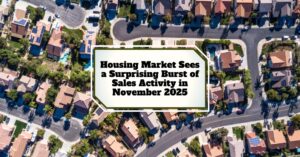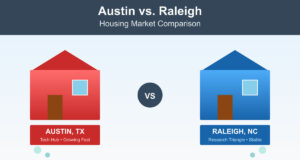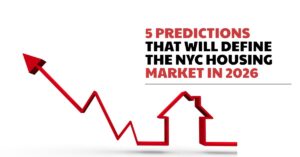The U.S. housing market is showing clear signs of strain, with foreclosure filings increasing year-over-year for the ninth consecutive month, signaling a troubling shift for many homeowners and a potential inflection point for the real estate sector. This persistent rise in foreclosure activity, as reported by ATTOM, suggests that the economic pressures faced by a growing number of households are translating into tangible distress.
It’s hard not to feel a sense of unease when you see the numbers, and this latest report from ATTOM paints a picture that’s hard to ignore. For the ninth month straight, we’re seeing more homes going into some stage of the foreclosure process compared to the same time last year. This isn't just a blip; it's a trend. In November 2025, a total of 35,651 U.S. properties had foreclosure filings.
While this is a slight dip from October, it's a significant 21 percent jump from November of the previous year. When I look at this data, I see more than just numbers; I see families facing difficult decisions and a market that’s clearly under pressure.
Housing Market Distress Mounts as Foreclosure Activity Rises for Ninth Month in a Row
Why the Climb? Unpacking the Foreclosure Trend
As Rob Barber, CEO at ATTOM, points out, “Foreclosure starts were up 17 percent from last year and completed foreclosures rose 26 percent.” This indicates that more homeowners are falling behind on their payments and lenders are taking action. While these numbers are still lower than what we saw during the Great Recession, the consistent upward movement is a clear signal that the market is “normalizing,” as Barber puts it. But let’s be honest, for those directly affected, it feels more like a significant struggle against higher housing costs and shifting economic pressures.
From my perspective, several factors are likely contributing to this escalating trend:
- Elevated Interest Rates: Many homeowners who bought or refinanced when interest rates were at historic lows are now facing much higher payments if they need to move or if their adjustable-rate mortgages reset. This can put a severe strain on household budgets.
- Inflationary Pressures: The cost of everyday goods and services remains high, squeezing disposable income. When there's less money left after covering essential expenses, mortgage payments can become harder to manage.
- Job Market Uncertainty: While the job market has shown resilience, there are pockets of instability. Layoffs and reduced hours can quickly lead to homeowners being unable to meet their financial obligations.
- Stagnant or Declining Home Equity in Some Areas: In some regions, home price appreciation has slowed or even reversed. This can leave homeowners with little to no equity to tap into if they need cash, making it harder to stave off foreclosure.
Where is the Distress Most Pronounced?
The ATTOM report highlights specific states and metropolitan areas that are seeing the brunt of this foreclosure surge. It's important to look at these areas to understand the localized impacts.
States with the Worst Foreclosure Rates (November 2025):
| State | Foreclosure Rate (1 in X housing units) |
|---|---|
| Delaware | 1,924 |
| South Carolina | 1,973 |
| Nevada | 2,373 |
| New Jersey | 2,511 |
| Florida | 2,565 |
Nationwide, one in every 3,992 housing units had a foreclosure filing. Seeing states like Delaware and South Carolina with rates more than double the national average is a serious concern. These aren't just statistics; they represent communities where people are struggling.
Among larger cities (metro areas with over 1 million people), Philadelphia, PA, recorded the highest foreclosure rate, with one filing for every 1,511 housing units. ATTOM notes this was partly due to a temporary spike from resumed data collection, which is expected to correct itself. However, other major metros also show significant distress:
- Las Vegas, NV: 1 filing for every 2,013 housing units
- Cleveland, OH: 1 filing for every 2,114 housing units
- Orlando, FL: 1 filing for every 2,282 housing units
- Tampa, FL: 1 filing for every 2,362 housing units
It’s interesting to note that even in these troubled areas, the overall volume of foreclosures remains historically lower than peak crisis times. This offers a sliver of hope, suggesting that perhaps more homeowners have built up equity or have better financial cushions than in the past.
Foreclosure Starts vs. Completed Foreclosures: What's the Difference?
It's crucial to understand the different stages of foreclosure.
- Foreclosure Starts: This is when lenders initiate the formal process, often with a notice of default or lis pendens. In November 2025, lenders started the foreclosure process on 23,720 U.S. properties. This is a 17 percent increase year-over-year.
- Completed Foreclosures (REOs – Real Estate Owned): This is when the lender repossesses the home. There were 3,884 completed foreclosures in November 2025, an increase of 26 percent from the previous year.
The fact that both starts and completions are rising indicates that the issue is widespread and moving through the pipeline at an accelerated pace.
States Leading in Foreclosure Starts (November 2025):
- Florida (2,819)
- Texas (2,612)
- California (2,090)
- New York (1,146)
- Illinois (1,075)
Interestingly, some major metropolitan areas, which typically see high numbers, actually experienced decreases in foreclosure starts compared to last year. For example, Boston, Miami, and Sacramento showed declines. This could suggest localized economic recovery in those specific urban centers, or perhaps more effective loss mitigation strategies being implemented there.
Looking Ahead: What Does This Mean for the Housing Market?
The steady rise in foreclosure activity is a strong indicator that the housing market is facing significant headwinds. As an observer of the real estate world, I see this as a natural, albeit painful, correction after years of rapid price growth and low interest rates.
- Potential Increase in Available Inventory: As more homes enter the foreclosure process and are eventually repossessed, the supply of homes for sale could increase. This might help to stabilize or even slightly decrease home prices in some areas, which could be a welcome development for potential buyers struggling with affordability.
- Impact on Home Prices: A sustained increase in supply, particularly of distressed properties, could put downward pressure on home prices. However, the extent of this impact will vary greatly by region, depending on local demand, economic conditions, and the sheer volume of foreclosures.
- Opportunities for Investors: For those with the capital and expertise, rising foreclosures can present opportunities to acquire properties at a discount. However, this market requires careful due diligence and a solid understanding of the risks involved.
- Challenge for Homeowners: For homeowners facing foreclosure, this is a deeply stressful time. It underscores the importance of proactive financial planning and seeking help from housing counselors or legal aid if needed.
While the situation is concerning, it’s important to remember that we are not in a widespread housing crisis on the scale of 2008. The market has more equity, and lending standards are generally tighter. However, the ongoing rise in foreclosure activity is a clear warning sign that we need to pay close attention to the economic well-being of homeowners and the stability of the housing market.
Secure Your Retirement with Cash-Flowing Rental Properties
Turnkey real estate offers a low-hassle way to generate passive income and build long-term financial security—perfect for retirement-focused investors.
Norada Real Estate helps you invest in stable, high-demand markets that deliver consistent monthly cash flow and equity growth over time.
🔥 HOT NEW LISTINGS JUST ADDED! 🔥
Talk to a Norada investment counselor today (No Obligation):
(800) 611-3060
Want to Know More About Foreclosure Trends?
Explore these related articles for even more insights:
- Zombie Foreclosures Decline Nationwide Amidst Peak Housing Demand
- Housing Markets With the Highest Zombie Foreclosure Rates in 2025
- 5 States Facing the Highest Foreclosure Rates in 2025
- Housing Market Alert: Rising Foreclosures in 2025 Signal Deeper Trouble Ahead
- Housing Markets With the Highest Zombie Foreclosure Rates in 2025
- US Foreclosure Activity Drops by 10% in 2024: A Sign of Stability?
- New Jersey Stands Out With Highest Foreclosure Rate Last Month
- Is the Housing Market Recovering? A Look at Recent Trends
- US Housing Market Sees Worst Year for Sales Since 1995
- Nearly 100,000 U.S. Properties Faced Foreclosure Filings in Q1 2024












